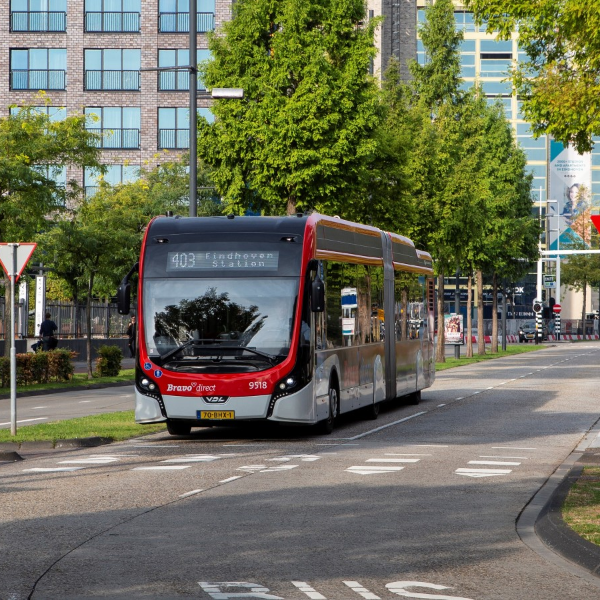HOV4 connects key locations in Eindhoven region

HOV4 connects key locations in Eindhoven region
The municipalities of Eindhoven and Veldhoven, together with the province of North Brabant, want to create a new high-quality public transport (HOV) connection between Eindhoven’s central station and Veldhoven business park De Run, home to organisations including ASML and the Máxima MC medical centre. The region is growing and the number of jobs is too, which has resulted in a need to increase the accessibility of important residential and work locations. This will be the region’s fourth HOV route, for which Witteveen+Bos is conducting exploratory studies ahead of the preferred route’s further development.
Eindhoven’s fourth HOV project
There are already several high-quality public transport links in Eindhoven – such as from the city centre to Eindhoven Airport – and plans exist for more. The proposed link between Eindhoven’s central station and Veldhoven’s De Run will be the fourth (i.e. HOV4). In June 2023, the municipal councils of Veldhoven and Eindhoven decided on the preferred route.
A HOV project is highly valuable because it is faster, more sustainable and more reliable than a regular connection. Public transport on these routes runs at high frequency and, where possible, on a separate carriageway. This makes it faster and more reliable than regular services, attracting more passengers. In line with the public transport concession granted by the province, electric vehicles will be introduced.
A good connection can be an alternative to (increasing) automobile traffic in the region, which reduces negative impacts in terms of liveability, safety, and air quality.
This project is about more than simply connecting two key locations in the region. The new HOV line will also provide access to planned housing projects (new-build, densification and renovation). A quick connection between city centre, railway station and business park is also an attractive prospect for these (future) residents.
Integrated task
Travelling by public transport is more sustainable than by car, and motorists are more likely to opt for public transport if there are sufficient benefits in return, such as speed, comfort and reliability.
The speed of bus trips will be increased by scheduling fewer stops along the line: too many stops lead to extra travel time. The result, however, is that passengers may have to walk or cycle further to and from their stops. If the route is attractive, however, the barrier of walking or cycling becomes lower.
This is where high-quality public transport and sustainability come together nicely – an integrated spatial task to strengthen biodiversity and climate robustness through, among other things, green-based measures. These will contribute to attractive walking and cycling routes to the bus stops, increasing the value of the HOV line.